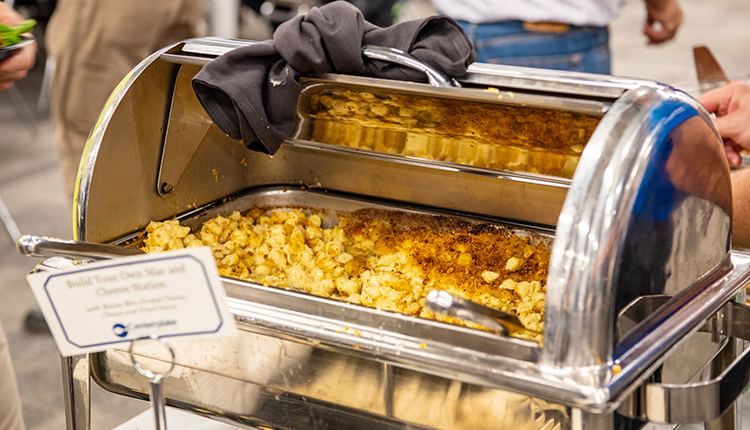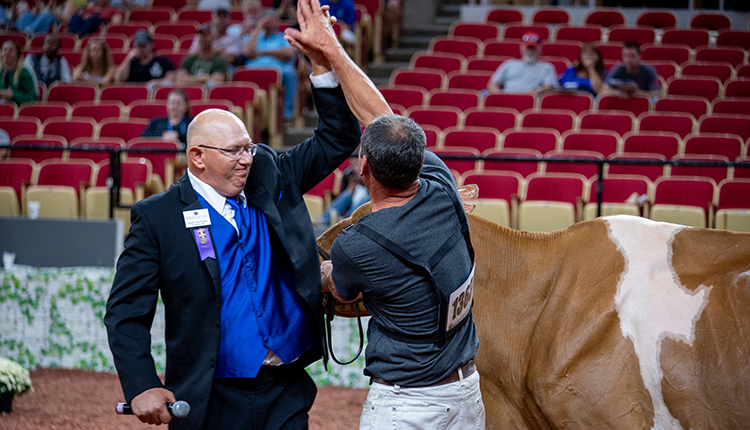Dairy steers are becoming a growing part of the beef industry. The number of beef cows that calved as of January 1, 2013, was down 3 percent from the year before, while the number of dairy cows that calved in that same time period remained unchanged. Because the dairy industry provides a consistent, predictable source of bull calves and they can produce high quality carcasses, dairy beef has become an important part of satisfying consumers' beef needs.

"It has been a long time since Holstein steers made up this much of the beef herd," explained Dan Loy, professor of Animal Science at Iowa State University and Iowa Beef Center Director. He discussed Holstein steer production at the Iowa State University Extension's Dairy Beef for Profit meeting earlier this month.
Holstein steers have an 8 to 12 percent higher maintenance energy requirement than beef breeds, and they consume 8 to 15 percent more feed. They have a lower dressing percentage and a lower muscle to bone ratio. Holsteins can have excellent quality grades, but rib eye shape and size can sometimes be an issue, Loy explained.
The good thing is, these challenges can be improved with the help of technology, noted Loy. More specifically, implants and terminal feed additives (beta agonists), which are used widely in beef production, can benefit Holstein steers as well.
There are 30 some types of implants, varying in delivery method, active ingredients and potency. Very simply, implants change nutrients from fat into muscle.
Terminal feed additives, or beta-agonists, bind to beta-adrenergic receptors in muscle. Beta-agonists facilitate action in cells, and in this case, they divert nutrients from other uses, especially fat deposition, and increase protein synthesis in skeletal muscle.
Anabolic steroids have been used in the beef cattle industry for more than 50 years as food safe and effective growth-promoting agents. Today, according to NAHMS USDA data, more than 90 percent of all feedlot cattle receive some sort of steroidal implant in their lifetime. It is important to note that these products need to be used as labeled to prevent compromises to animal health and welfare.
Technology is part of the beef (and dairy beef) sustainability story, concluded Loy. With an opportunity for dairy beef to become a larger part of the beef industry, it may be wise for Holstein steer growers to consider their options for improving production.

The author is an associate editor and covers animal health, dairy housing and equipment, and nutrient management. She grew up on a dairy farm near Plymouth, Wis., and previously served as a University of Wisconsin agricultural extension agent. She received a master's degree from North Carolina State University and a bachelor's from University of Wisconsin-Madison.

"It has been a long time since Holstein steers made up this much of the beef herd," explained Dan Loy, professor of Animal Science at Iowa State University and Iowa Beef Center Director. He discussed Holstein steer production at the Iowa State University Extension's Dairy Beef for Profit meeting earlier this month.
Holstein steers have an 8 to 12 percent higher maintenance energy requirement than beef breeds, and they consume 8 to 15 percent more feed. They have a lower dressing percentage and a lower muscle to bone ratio. Holsteins can have excellent quality grades, but rib eye shape and size can sometimes be an issue, Loy explained.
The good thing is, these challenges can be improved with the help of technology, noted Loy. More specifically, implants and terminal feed additives (beta agonists), which are used widely in beef production, can benefit Holstein steers as well.
There are 30 some types of implants, varying in delivery method, active ingredients and potency. Very simply, implants change nutrients from fat into muscle.
Terminal feed additives, or beta-agonists, bind to beta-adrenergic receptors in muscle. Beta-agonists facilitate action in cells, and in this case, they divert nutrients from other uses, especially fat deposition, and increase protein synthesis in skeletal muscle.
Anabolic steroids have been used in the beef cattle industry for more than 50 years as food safe and effective growth-promoting agents. Today, according to NAHMS USDA data, more than 90 percent of all feedlot cattle receive some sort of steroidal implant in their lifetime. It is important to note that these products need to be used as labeled to prevent compromises to animal health and welfare.
Technology is part of the beef (and dairy beef) sustainability story, concluded Loy. With an opportunity for dairy beef to become a larger part of the beef industry, it may be wise for Holstein steer growers to consider their options for improving production.

The author is an associate editor and covers animal health, dairy housing and equipment, and nutrient management. She grew up on a dairy farm near Plymouth, Wis., and previously served as a University of Wisconsin agricultural extension agent. She received a master's degree from North Carolina State University and a bachelor's from University of Wisconsin-Madison.








